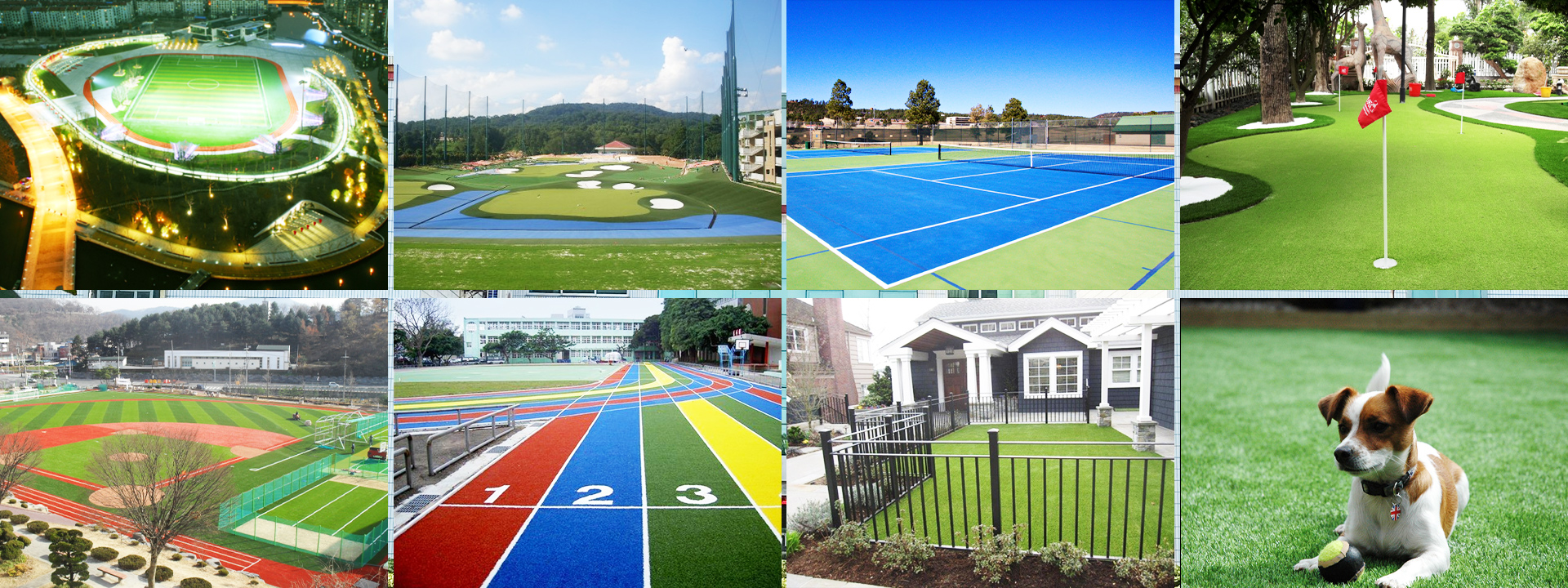Who knew that artificial grass could be so complicated?
In this section, we’ll demystify all the specific terminology in the artificial grass world so you can interpret product specifications and find the synthetic turf that will be the best fit for your project.
Yarn
Only three types of yarn are used in artificial grass: polyethylene, polypropylene and nylon.
Polyethylene is the most commonly used because of its versatility and balance between durability, aesthetics, and softness. Polypropylene is typically used for putting greens and as a thatch layer on landscape grasses. Nylon is the most expensive and durable yarn material, but it’s not soft and is most commonly used for putting greens. Yarn comes in a variety of colors, thicknesses, and shapes to mimic specific species of grass.
Density
Also called stitch count, density is the number of blades per square inch. Similar to thread count in sheets, a denser stitch count signifies a higher-quality turf. Denser turf products are more durable and provide a more realistic artificial grass lawn.
Pile Height
Pile height refers to how long the blades of artificial grass are. If you need fake grass for a sports field, dog run, or other high-traffic area, look for a shorter pile height, between 3/8 and 5/8 inches. A luxurious, true-to-life look for a front yard is achieved by products with a longer pile height, between 1 ¼ and 2 ½ inches.
Face Weight
Face weight refers to how many ounces of material per square yard a type of turf has. The heavier the face weight, the better quality and more durable the artificial grass is. Face weight does not include the weight of the backing material.
Thatch
Thatch is additional fiber with varying color, weight, and texture that mimics the inconsistencies of natural grass. Thatch often includes brown fibers that replicate the dying underlayer of grass beneath the vibrant green, growing one. If you’re looking for a synthetic grass product for your front or back lawn, a product with thatch will get you the closest look to the real thing.
Infill
Infill plays many roles in keeping your artificial grass pristine. It keeps fibers upright, acts as a stabilizer to prevent the turf from shifting, and makes the grass look and feel more realistic. Without infill, turf fibers would quickly become flat and matted. It also cushions feet and paws that walk on it, as well as protecting the backing from sun damage. Infill is made from a variety of materials, including silica sand and crumb rubber. Some brands come with antimicrobial, anti-odor, or cooling properties.
Backing
The backing on synthetic grass has two parts: primary backing and secondary backing. Both the primary and secondary backings work together to provide dimensional stability to the entire system. The primary backing is comprised of woven polypropylene fabrics that allow the artificial grass fibers to be tufted into the material in rows and facilitate seaming between artificial grass panels. In other words it’s the durable material that the grass blades/fibers are stitched to.
A good backing will resist stretching. The Secondary Backing is often referred to as the ‘coating’ and is applied to the reverse side of the primary backing in order to permanently lock the tufted fibers permanently in place.Together, the primary and secondary backing make up the back weight. You can expect to see a back weight above 26 oz. on a high-quality turf product. A decent back weight is a must for any installation area that will see heavy traffic.
Color
Just as natural grass comes in a variety of colors, so does fake grass. High-quality artificial grass will include a number of colors to mirror the look of real grass. Choose a color that most closely mirrors the natural grass species in your area.
Sub-Base
If you try to install artificial grass directly onto soil, you’ll get dimples and wrinkles as the soil expands and contracts during wet and dry seasons. So while it’s not an official part of your artificial grass, having a good sub-base is critical to a quality turf installation. The sub-base is a layer of compacted sand, decomposed granite, river rocks and gravel beneath the artificial grass. It acts as the foundation for your synthetic turf and needs to consist of the right materials to ensure proper drainage.
Post time: Aug-11-2022

